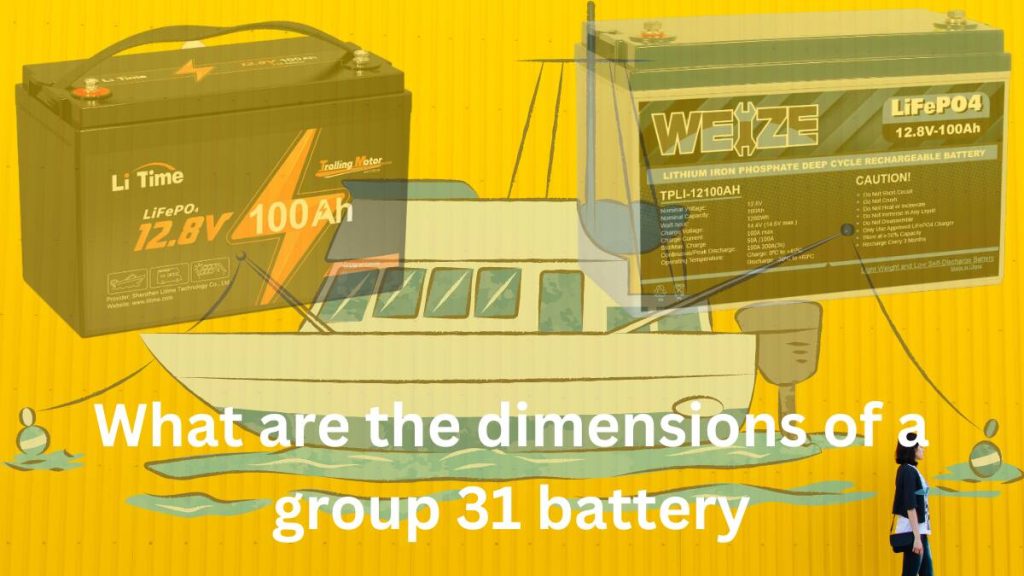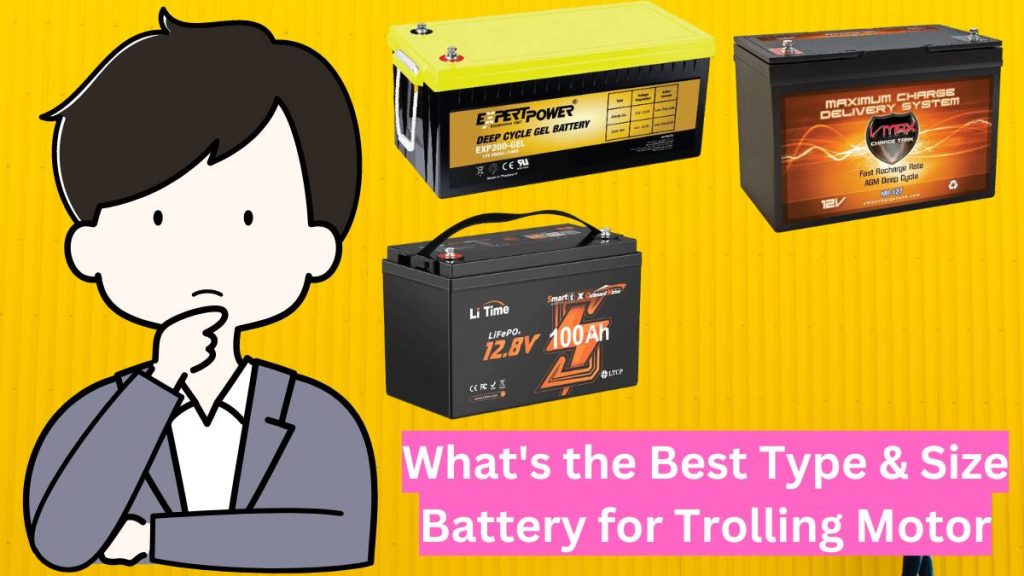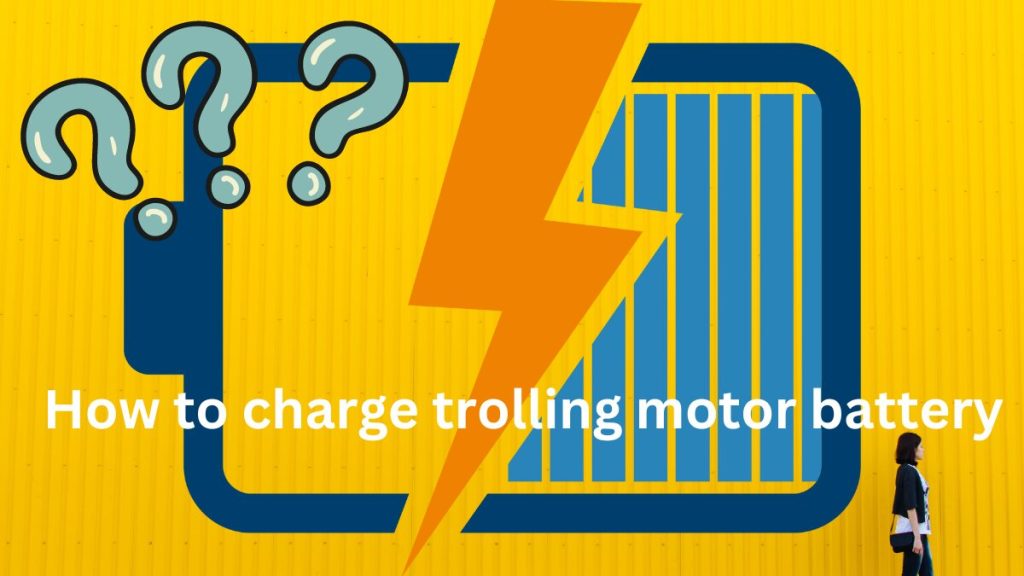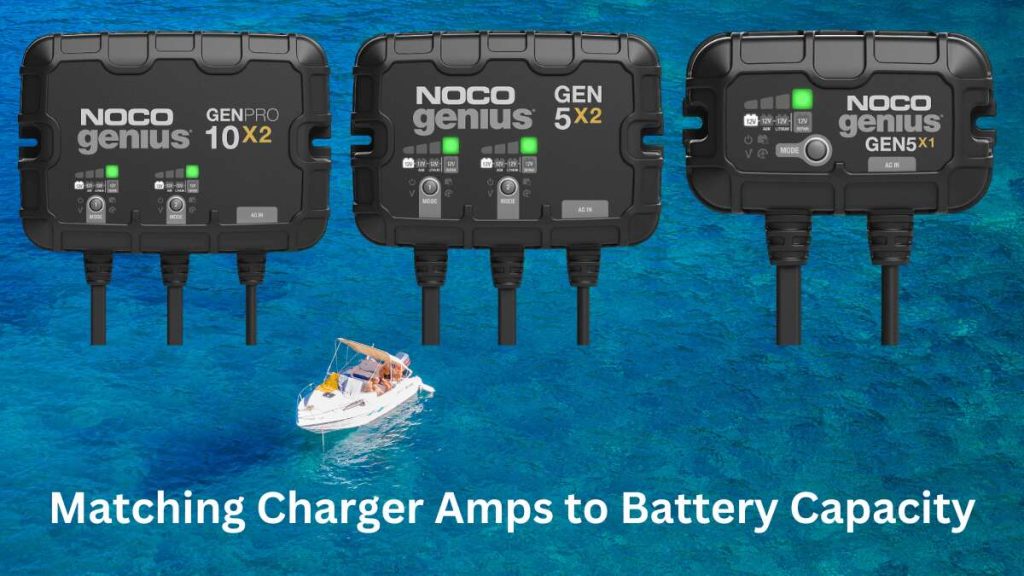When choosing a battery for your vehicle or equipment, understanding the specifications of different battery types is essential. One commonly used battery size is the Group 31 battery, which stands out for its robust performance and versatility. Battery Group 31 is renowned for its larger physical dimensions and higher capacity, making it a preferred choice for applications that demand significant power, such as trucks, RVs, marine vessels, and heavy machinery. These batteries are designed to deliver reliable performance under rigorous conditions, thanks to their substantial size and energy storage capabilities.
Knowing the dimensions of a Battery Group 31 is crucial for several reasons. First and foremost, ensuring that the battery fits properly within the designated space of your vehicle or equipment is vital for both installation and safety. Accurate dimensions help prevent issues related to battery fit, which can affect the battery’s performance and lifespan. Additionally, understanding the battery’s dimensions allows for better planning and compatibility with battery trays or compartments. This knowledge ensures that you select the correct battery for your needs, optimizing both performance and efficiency. By familiarizing yourself with Battery Group 31 dimensions, you can make informed decisions that will enhance the reliability and effectiveness of your power system.
What is Battery Group 31?
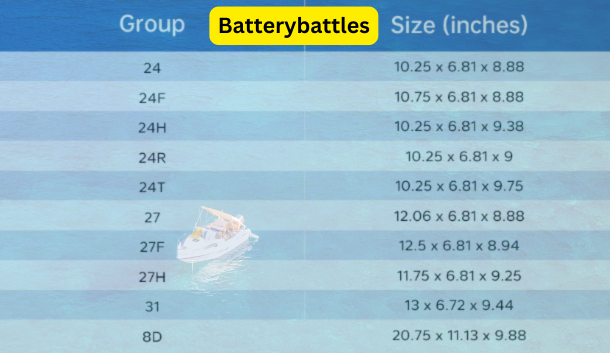
Definition and Specifications
Battery Group 31 refers to a specific category of battery standardized by the Battery Council International (BCI) to ensure consistency across different manufacturers. Group 31 batteries are characterized by their larger physical size and high capacity, designed to deliver robust performance for demanding applications. The typical dimensions of a Group 31 battery are approximately 12.2 inches in length, 6.8 inches in width, and 9.4 inches in height, though slight variations can occur between different brands. These batteries usually come with a rating of around 90 to 130 amp-hours (Ah) and feature a deep-cycle design, making them suitable for applications requiring sustained power over extended periods.
Common Uses and Applications
Battery Group 31 batteries are commonly used in heavy-duty applications due to their substantial power and durability. They are frequently employed in trucks, RVs, marine vessels, and various types of industrial equipment. In trucks and RVs, they provide the high cranking power needed for starting engines and supporting onboard electronics. In marine settings, they are ideal for powering trolling motors and other electrical systems. Their deep-cycle design makes them well-suited for applications where the battery is regularly discharged and recharged, such as in solar energy systems and backup power supplies.
Comparison with Other Battery Groups
When comparing Battery Group 31 to other battery groups, it is evident that Group 31 stands out due to its larger size and higher capacity. For instance, Group 24 and Group 27 batteries are smaller and typically used in less demanding applications, such as passenger vehicles or smaller boats. Group 31 batteries offer greater reserve capacity and longer service life, making them more appropriate for applications with higher energy demands. Additionally, the Group 31 battery’s dimensions and power output provide a more robust solution compared to smaller battery groups, ensuring that it meets the needs of heavy-duty and high-performance applications.
Battery Group 31 Dimensions: Standard Measurements
Length
The standard length of a Battery Group 31 is approximately 12.2 inches (31 cm). This dimension is crucial as it ensures the battery fits correctly within the designated space of your vehicle or equipment. The length is a key factor when designing or selecting battery trays and compartments, as it affects how the battery integrates into the overall system.
Width
The width of a Battery Group 31 typically measures around 6.8 inches (17.3 cm). This dimension contributes to the overall footprint of the battery and is important for ensuring that the battery can be accommodated in the available space. Accurate measurement of the width helps avoid issues with battery fit and alignment in various applications.
Height
Battery Group 31 batteries generally have a height of about 9.4 inches (23.9 cm). The height is significant for fitting the battery in vertical spaces and ensuring proper clearance. This measurement is also crucial for compatibility with battery holders and covers, preventing potential interference with other components.
Terminal Locations
The terminal locations of Battery Group 31 batteries are standardized to ensure compatibility with a wide range of equipment. Typically, the terminals are positioned on the top of the battery, with the positive and negative terminals spaced to match standard connections. Some variations may occur in the exact placement and type of terminals, but adherence to standard configurations helps facilitate easier installation and maintenance. Understanding terminal locations is essential for connecting the battery properly and ensuring reliable electrical performance.
Factors Affecting Battery Dimensions
Manufacturing Variations
While Battery Group 31 dimensions are standardized, there can be slight variations between different manufacturers. These differences can arise due to variations in production processes, materials used, and design choices. While most Group 31 batteries adhere closely to the standard dimensions—approximately 12.2 inches in length, 6.8 inches in width, and 9.4 inches in height—some batteries might be marginally larger or smaller. These minor discrepancies can impact the battery’s fit and compatibility with certain battery trays or compartments, so it’s important to verify the exact dimensions when replacing or installing a new battery.
Design Specifications
Design specifications play a significant role in determining the dimensions of a Battery Group 31. Different manufacturers may prioritize various features, such as additional protective casings, reinforced structures, or specific terminal configurations, which can slightly alter the battery’s overall size and shape. For instance, a battery designed for extreme durability might have a more robust casing, adding to its height or width. Additionally, the type of electrolyte and internal construction can affect the dimensions, influencing the battery’s performance and how it fits within a given space.
Application-Specific Requirements
The intended application of a Battery Group 31 can also impact its dimensions. For specialized uses, such as high-performance marine or industrial equipment, batteries might be designed with specific physical attributes to meet the demands of the application. For example, a battery intended for marine use might have added features like reinforced terminals or additional insulation, which can affect its size. Understanding the application-specific requirements helps ensure that the chosen battery not only fits properly but also performs optimally in its intended environment.
Group 31 Batteries: A Comprehensive Overview
Group 31 batteries are a popular choice for various applications, including marine, RV, and automotive. They are known for their reliable performance and long lifespan. However, there are several different types of Group 31 batteries available, each with its own unique characteristics and advantages.
1. Group 31 Flooded Lead Acid Batteries
Flooded lead acid batteries are the most traditional type of Group 31 battery. They are characterized by their open-cell design, which allows for the addition of electrolyte. While they are relatively inexpensive, flooded lead acid batteries have some limitations.
Pros:
- Low initial cost
- Well-suited for deep-cycle applications
- Easy to maintain
Cons:
- Prone to acid spills
- Requires regular maintenance (adding water)
- Susceptible to sulfation, which can reduce capacity over time
2. Group 31 AGM Batteries
AGM (Absorbed Glass Mat) batteries are a more advanced type of lead acid battery. They use a special separator material that absorbs the electrolyte, preventing spills and making them more resistant to vibration.
Pros:
- Sealed design, preventing acid spills
- Excellent vibration resistance
- Faster charging times than flooded lead acid batteries
Cons:
- Higher initial cost than flooded lead acid batteries
- Limited cycle life compared to some other battery types
3. Group 31 Gel Batteries
Gel batteries are similar to AGM batteries but use a gel-like electrolyte instead of a mat. This gel helps to prevent electrolyte stratification and improve the battery’s performance in extreme temperatures.
Pros:
- Excellent performance in extreme temperatures
- Sealed design, preventing acid spills
- Long cycle life
Cons:
- Higher initial cost than AGM or flooded lead acid batteries
- Can be sensitive to overcharging
4. Group 31 Lithium Batteries
Lithium batteries are a relatively new technology that has gained popularity in recent years. They offer several advantages over traditional lead acid batteries, including higher energy density, longer lifespan, and faster charging times.
Pros:
- High energy density, providing more power per pound
- Long cycle life
- Fast charging times
- Lightweight and compact design
Cons:
- Higher initial cost
- Can be sensitive to extreme temperatures
Understanding Battery Group 31 in Different Contexts / Applications
Automotive Applications
Group 31 batteries are a common choice for automotive applications, providing reliable power for starting, ignition, and accessory systems. Their robust construction and ample capacity make them suitable for a wide range of vehicles, from sedans and SUVs to trucks and heavy-duty equipment.
In automotive applications, Group 31 batteries are typically used as the primary power source for the vehicle’s electrical system. They are responsible for powering the starter motor, ignition system, headlights, taillights, and other accessories. For vehicles with advanced features like navigation systems, audio systems, and climate control, a larger Group 31 battery may be required to ensure adequate power supply.
Battery Group 31 Dimensions play a crucial role in ensuring compatibility with different automotive models. By adhering to the standard dimensions, Group 31 batteries can be easily installed in most vehicles without modifications.
Marine Applications
Group 31 batteries are also widely used in marine applications, providing power for various onboard systems. From starting the engine to powering navigation equipment, lighting, and other accessories, these batteries play a vital role in ensuring a safe and enjoyable boating experience.
For marine applications, Group 31 batteries are often installed in banks to provide sufficient power for extended periods. The number of batteries required will depend on the size and features of the boat, as well as the anticipated usage. Deep-cycle Group 31 batteries are particularly well-suited for marine applications, as they can withstand repeated discharge and recharge cycles.
Battery Group 31 Dimensions are essential for ensuring proper fit and compatibility with marine battery compartments. Adhering to the standard dimensions allows for easy installation and replacement of Group 31 batteries in marine vessels.
RV and Off-Grid Systems
Group 31 batteries are a popular choice for RVs and off-grid systems, providing reliable power for various appliances and amenities. Whether you’re camping in remote locations or living off-grid, these batteries can ensure a comfortable and independent lifestyle.
In RV applications, Group 31 batteries are typically used to power essential systems such as lights, water pumps, refrigerators, and air conditioning. For off-grid systems, these batteries may be combined with solar panels and inverters to create a sustainable and self-sufficient power supply.
Battery Group 31 Dimensions are important for ensuring compatibility with RV battery compartments and off-grid systems. By following the standard dimensions, you can easily install and replace Group 31 batteries without modifications.
Comparing Battery Group 31 with Other Battery Sizes
Group 24 vs. Group 31
Group 24 and Group 31 batteries are both popular choices for automotive and marine applications. While they share some similarities, there are key differences in their size and capacity.
Group 24 batteries are generally smaller and have a lower capacity compared to Group 31 batteries. This makes them suitable for smaller vehicles or applications that require less power. However, they may not be sufficient for larger vehicles or demanding applications.
Group 31 batteries are larger and have a higher capacity, making them more suitable for larger vehicles and applications that require sustained power. They are often used in trucks, SUVs, and RVs.
Battery Group 31 Dimensions are larger than Group 24 dimensions, allowing for a greater storage capacity. This increased capacity is ideal for applications that demand more power.
Group 27 vs. Group 31
Group 27 and Group 31 batteries are similar in size and capacity, but there are some subtle differences.
Group 27 batteries are slightly smaller than Group 31 batteries, making them suitable for applications where space is limited. However, their capacity may be slightly lower than Group 31 batteries.
Group 31 batteries offer a slightly larger capacity and are more commonly used in applications that require sustained power, such as RVs and marine vessels.
Battery Group 31 Dimensions are slightly larger than Group 27 dimensions, providing a small increase in capacity. This extra capacity can be beneficial for applications that require a little more power.
Group 4D vs. Group 31
Group 4D and Group 31 batteries are both large-format batteries, but they have distinct differences in their dimensions and capacity.
Group 4D batteries are significantly larger than Group 31 batteries, offering a much higher capacity. They are primarily used in heavy-duty applications, such as commercial trucks and buses.
Group 31 batteries are a more versatile option, suitable for a wider range of applications, including automotive, marine, and RV use.
Battery Group 31 Dimensions are smaller than Group 4D dimensions, making them more suitable for a variety of applications. While Group 31 batteries may not have the same massive capacity as Group 4D batteries, they offer a good balance of size and performance for many applications.
In conclusion, the choice between Group 24, Group 27, Group 31, and Group 4D batteries depends on the specific requirements of your application. By understanding the differences in size, capacity, and dimensions, you can select the battery that best suits your needs.
battery group 31 dimensions – Top & Best Batteries
1. Li time 12V 100Ah TM Low-Temp Protection LiFePO4 Battery Buit in 100A BMS, Group 31 Deep Cycle
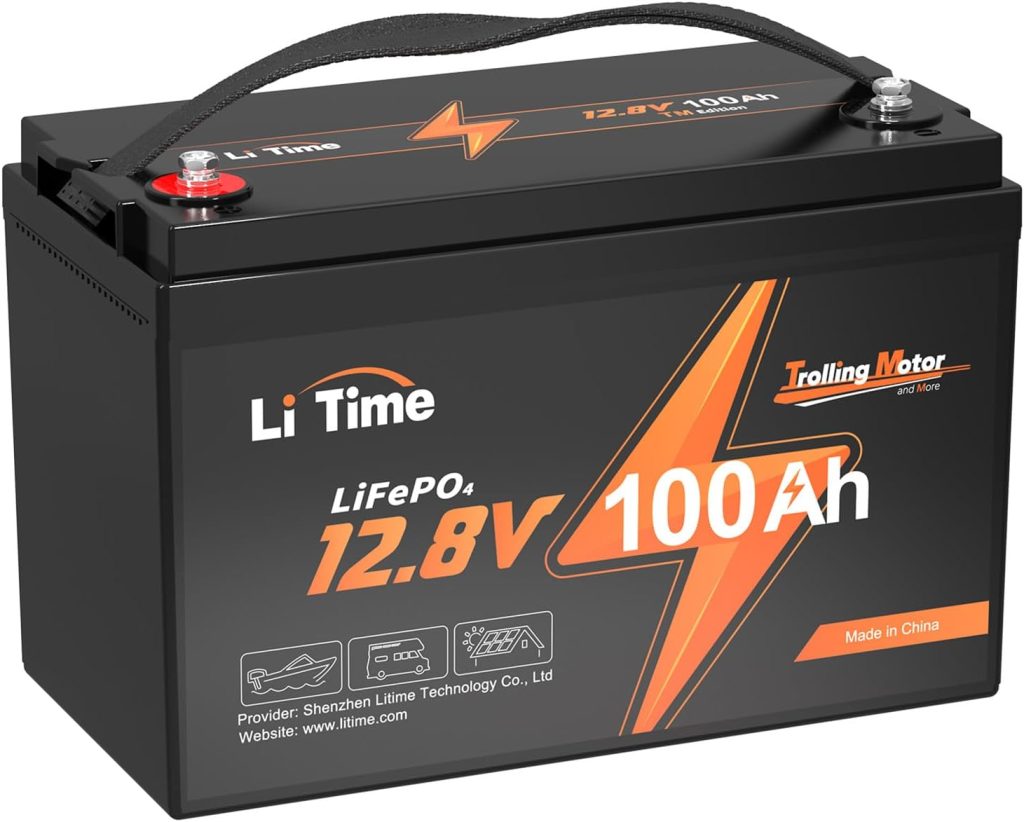
The Litime 12V 100Ah TM is a LiFePO4 battery designed for trolling motors, boats, RVs, and solar applications. It boasts a long lifespan, advanced safety features, and expandable capacity.
Features
- 12V 100Ah capacity with 1280Wh of energy �
- Built-in 100A BMS protects against overcharge, discharge, current surges, overheating, and short circuits �
- Low-temperature cut-off for safe use in cold environments
- Superior shock resistance
- Group 31 size for easy replacement of lead-acid batteries �
- Expandable to 48V 400Ah system �
Advantages vs. Lead-Acid Batteries
- Lasts up to 10 times longer (15,000 cycles) �
- Faster charging
- Lighter weight
- More durable and safer
Disadvantages
- Higher initial cost
- Not suitable for starting applications (max discharge current 1C)
Usage
This 12V lithium trolling motor battery is ideal for powering trolling motors, boats, RVs, solar systems, and various other applications. 1It can be connected in series or parallel for increased voltage or capacity. 1
Why Buy?
Upgrade your trolling motor or RV with this reliable 12V 100Ah LiFePO4 battery. Enjoy long-lasting performance, safety features, expandable capacity, and a Group 31 size for easy replacement. Litime also offers a 5-year warranty and excellent customer service.
2. Redodo 12V 100Ah LiFePO4 Battery, Group 31 Lithium Battery with 100A BMS
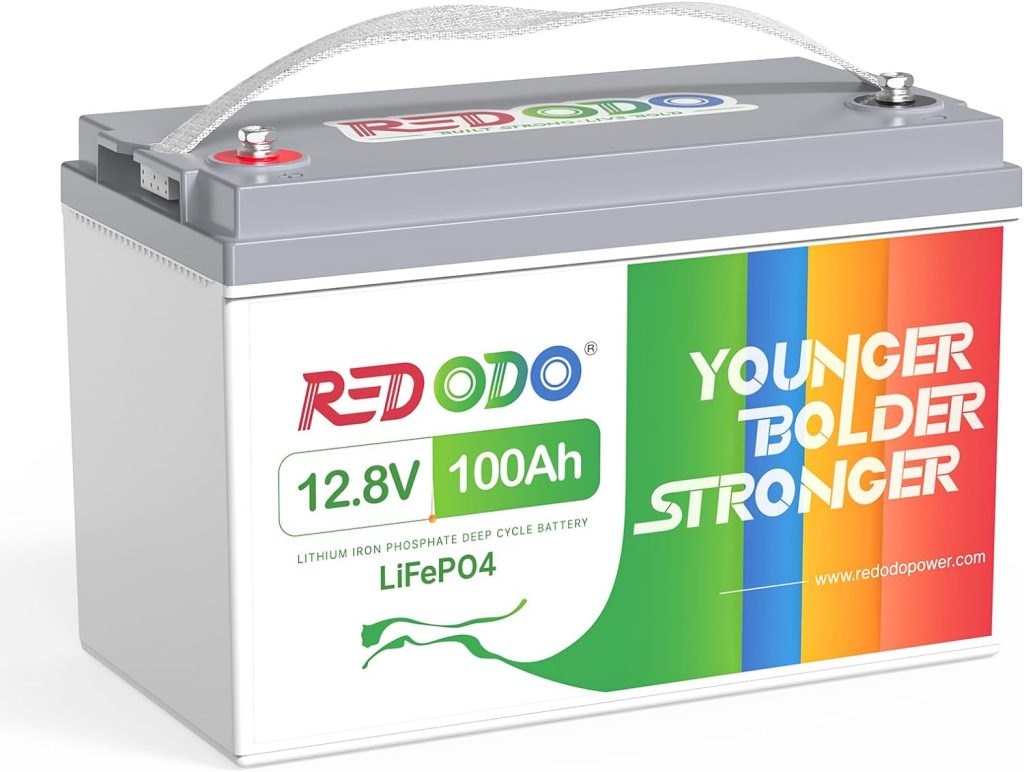
The Redodo 12V 100Ah LiFePO4 battery is a high-performance, long-lasting power source designed for RV, solar, trolling motor, and off-grid applications. It offers superior safety features, a compact design, and exceptional durability.
Features
- 12V 100Ah capacity with 1280Wh of energy
- Built-in 100A BMS for overcharge, discharge, current, temperature, and short circuit protection
- Lightweight and compact design (Group 31 dimensions)
- Expandable to 48V 400Ah system
- Low self-discharge rate (3%)
- Long lifespan (up to 15,000 cycles)
Advantages vs. Lead-Acid Batteries
- Longer lifespan and more cycles
- Lighter weight and smaller size
- Higher energy density
- Lower self-discharge rate
- More eco-friendly
Disadvantages
- Higher initial cost
Usage
This 12V lithium trolling motor battery is ideal for powering trolling motors, boats, RVs, solar systems, and various other applications. It can be connected in series or parallel for increased voltage or capacity.
Why Buy?
Upgrade your RV, solar system, or trolling motor with the Redodo 12V 100Ah LiFePO4 battery. Enjoy its long lifespan, superior performance, safety features, and compact design. Experience the benefits of lithium technology and enhance your outdoor adventures.
3. Product Description

The Weize 12V 100Ah LiFePO4 battery is a high-performance, long-lasting power source designed for trolling motors, RVs, solar systems, and various outdoor applications. It offers superior safety features, a compact design, and exceptional durability.
Features
- 12V 100Ah capacity with 1280Wh of energy
- Built-in BMS for overcharge, discharge, current, temperature, and short circuit protection
- Low-temperature cut-off for safe use in cold environments
- Lightweight and compact design (Group 31 dimensions)
- Long lifespan (up to 8000 cycles)
Advantages vs. Lead-Acid Batteries
- Longer lifespan and more cycles
- Lighter weight
- Higher energy density
- Lower self-discharge rate
- Safer and more environmentally friendly
Disadvantages
- Higher initial cost
Usage
This 12V lithium trolling motor battery is ideal for powering trolling motors, boats, RVs, solar systems, and various other applications. It can be connected in series or parallel for increased voltage or capacity.
Why Buy?
Upgrade your outdoor equipment with the Weize 12V 100Ah LiFePO4 battery. Enjoy its long lifespan, superior performance, safety features, and compact design. Experience the benefits of lithium technology and enhance your adventures.
Conclusion: The Versatility of Battery Group 31
Battery Group 31 has established itself as a versatile and reliable power source for a wide range of applications. Its standardized dimensions ensure compatibility with various devices and systems, making it a convenient choice for users. The combination of size, capacity, and performance characteristics makes Group 31 batteries ideal for automotive, marine, RV, and off-grid applications.
While Group 31 batteries offer numerous advantages, it’s important to consider individual needs and preferences when selecting the right battery. Factors such as required capacity, operating environment, and budget should be carefully evaluated. By understanding the characteristics and benefits of Battery Group 31, users can make informed decisions and select the optimal battery for their specific requirements.
In conclusion, Battery Group 31 continues to be a popular and reliable choice for various applications. Its standardized dimensions, combined with its performance and versatility, make it a valuable asset in powering a wide range of devices and systems.

